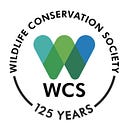WCS 3-Sentence Science
The Secret Lives of Sulawesi’s Civets
January 9, 2020
Each year, Wildlife Conservation Society scientists publish more than 300 peer-reviewed studies and papers. “WCS 3-Sentence Science” is a regular tip-sheet — in bite sized helpings — of some of this published work.
Here we present work by the WCS Indonesia program to collect data related to the ecological status of Sulewesi civet habitat.
- There has been a 20-year lapse since the last field record of the Sulawesi civet (Macrogalidia musschenbroekii), which is found only on the Indonesian island of Sulawesi, where it is the largest mammalian predator.
- Researchers set up 148 camera trap stations across the forests of North Sulawesi, including in two of its main protected areas: Bogani Nani Wartabone National Park and Tangkoko Nature Reserve, recording civets 17 times at 12 stations, and in almost equal numbers in primary forest, secondary forest and farmland, including the first photographic records from both the National Park and Nature Reserve.
- The results show that neither IFL nor LWE identifies areas of ecologically intact fauna well enough, underscoring a strong need to obtain additional site-level survey data to confirm faunal intactness.
Study and Journal: “New insights into Sulawesi’s apex predator: The Sulawesi civet Macrogalidia musschenbroekii” from Oryx
WCS Co-Author(s): Iwan Honowu (Lead) , WCS Indonesia program; Alfons Patandung, Biodiversity Conservation Officer, WCS Indonesia; Wulan Pusparini, WCS Indonesia Program; Andi Nugraha Cahyana, GIS Specialist, WCS Inonesia program; Matthew Linkie , WCS Indonesia Program Director
For more information, contact: Stephen Sautner, 718–220–3682, ssautner@wcs.org.
